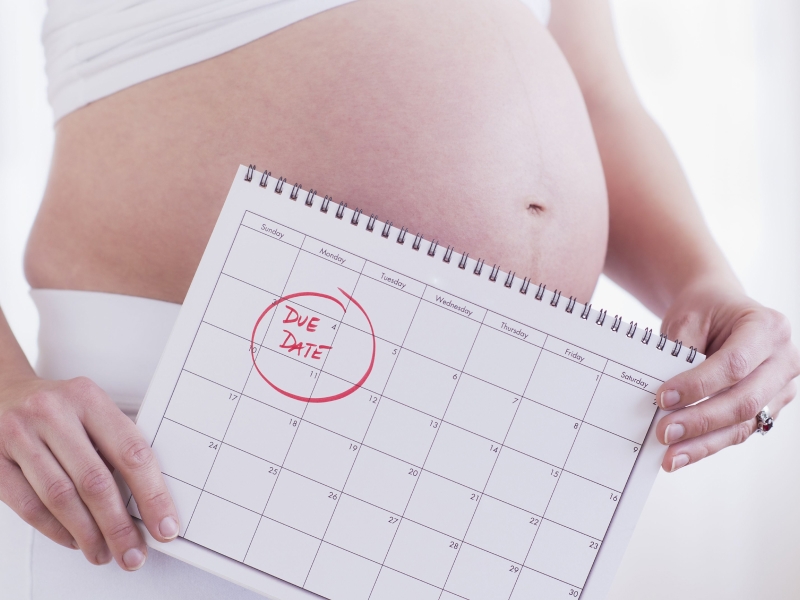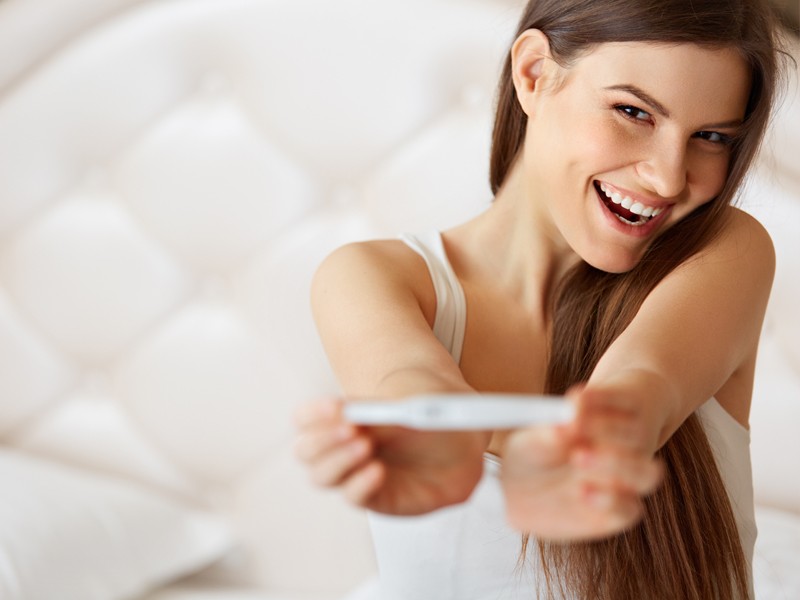How to calculate the due date after IVF?

Calculation of the due date is an important thing since it allows us to monitor the level of development of the child, as well as the state of the woman’s body in different trimesters. With natural conception, the due date is most often determined by the obstetric method – from the first day of the last menstruation. If conception is a result of in vitro fertilization (IVF), then several methods are used to calculate it at once. How to calculate the gestational age, what methods gynecologists use for this, read on.
How is the due date calculated?
The estimated due date (EDD) is important for all pregnant women. Childbirth is a complex process, which is accompanied by rather high risks for the expectant mother and baby. That’s why the preparations for it should begin in advance.It is especially significant for women who become pregnant through the artificial insemination procedure since bearing of a child is more difficult because of high risks of miscarriage, spontaneous abortion or other negative consequences for the embryo.
The IVF due date calculator allows you to calculate the expected due date – a special application that is based on one of two methods:
- Negel formula. To determine the due date, 9 months and 7 days are added to the date when the last menstruation began. In this case, the doctor focuses on the duration of the obstetric gestation period (40 weeks or an average of 9 months).
- Mathematical. In this case, the following formula is used: 280 days are added to the date of the last menstruation.
None of the above methods certainly does not guarantee a woman will give birth at a strictly set time. Doctors agree the onset of labor during a normal pregnancy is determined by the condition of the fetus. When all organs and systems of the child are ready for independent life outside the mother’s womb, a biosignal is triggered that activates uterine contractions, and as a result, the onset of labor activity.
To calculate the date of conception and childbirth using a calculator, you just need to put the required initial data.
In addition, the tool provides information about:
- changes that occur in the body of the expectant mother;
- compulsory medical examination;
- developmental level and parameters of the fetus.
It should be noted the work of such utilities as the IVF due date calculator is based on averaged information. It means the results given out may partly not coincide with the real ones, since the process of bearing a baby for each woman is individual.
Calculating pregnancy due date after IVF
When conceiving a child in the traditional way, it is almost impossible to determine the exact day of the onset of pregnancy, especially if the spouses had high sexual activity. If pregnancy occurs as a result of IVF it’s another pair of shoes. In this case, doctors can accurately determine the date since the process of embryo transfer at the VittoriaVita clinic is carefully managed.
There are several methods used for calculation:
- Embryonic. The starting point is the moment of embryo transfer into the uterus. After the sperm-oocyte fusion occuring in a special container, the embryo is implanted in the patient’s uterus on the 3-5th day, depending on its condition and the readiness of the expectant mother. From that day on, the countdown begins.
- Obstetric. This method is used during conception by artificial insemination or during natural pregnancy. In accordance with it, the starting point of gestation is the date of the first day of the last menstruation. Obstetric and embryonic methods give a discrepancy of two weeks. However, the day of delivery with a normal cycle will be almost the same.
- Gynecological. The term of pregnancy is determined on the basis of a gynecological examination in this case. This calculation method is relevant only until the end of the first trimester, since the initial stage of embryo development is similar for all women.
- Ultrasound. All expectant mothers undergo this examination, regardless of the method of conception – natural or in vitro. The protocol provides three examinations – at 11-14, 18-21 and 29-31 weeks, but with IVF their number may increase. The exact date of the ultrasound appointment is determined by the attending physician.
The expectant mother is able to determine the due date during IVF by the movement of the fetus. The baby usually begins to move intensively at 19-20 weeks, so if a woman clearly feels tremors and beating, she can be sure that half of the pregnancy is over.
Accuracy of calculating pregnancy due date after IVF
The mother-to-be needs to know how to calculate the weeks of pregnancy, as this allows to:
- understand how the process of carrying a baby goes, whether there are any deviations from the norm or threats to the life of a woman and a child;
- determine the date of the necessary tests;
- conduct an ultrasound examination at the required time.
It should be noted the calculation of the gestation is carried out only once – in the first months, when the anatomical dimensions of the fetus are actually the same. After the fourth month of pregnancy, doctors conduct an examination of the compliance of the parameters of the child (weight, height) and the uterus using the obstetric method. If at these stages no inconsistencies are found, then we can state the child’s development is going well.
The accuracy of IVF gestational age and due date results will depend on the method. Usually, in the first stages of childbearing, gynecologists use the method of studying the concentration of chorionic gonadotropin. This hormone begins to be produced by the placenta 5-7 days after the embryo transfer. However, in some cases, the concentration of hCG in a woman’s body under the influence of various factors can vary significantly and give an inaccurate result when calculated. More effective methods of determining the duration of pregnancy in the first three months are obstetric or embryonic.
In the second trimester, a gynecological method is used for an approximate due date, in which the doctor analyzes the compliance of the size of the uterus and fetus with the standard parameters. It is recommended to use several methods at once for the most efficient calculations. Toward the end of the term, it is advisable to undergo an ultrasound scan to establish the EDD.
Accurate calculation of gestational age is a guarantee of timely delivery and reliable protection against possible interference in the natural process of delivery. The IVF pregnancy calculator and professional gynecologists will help to calculate them correctly.


